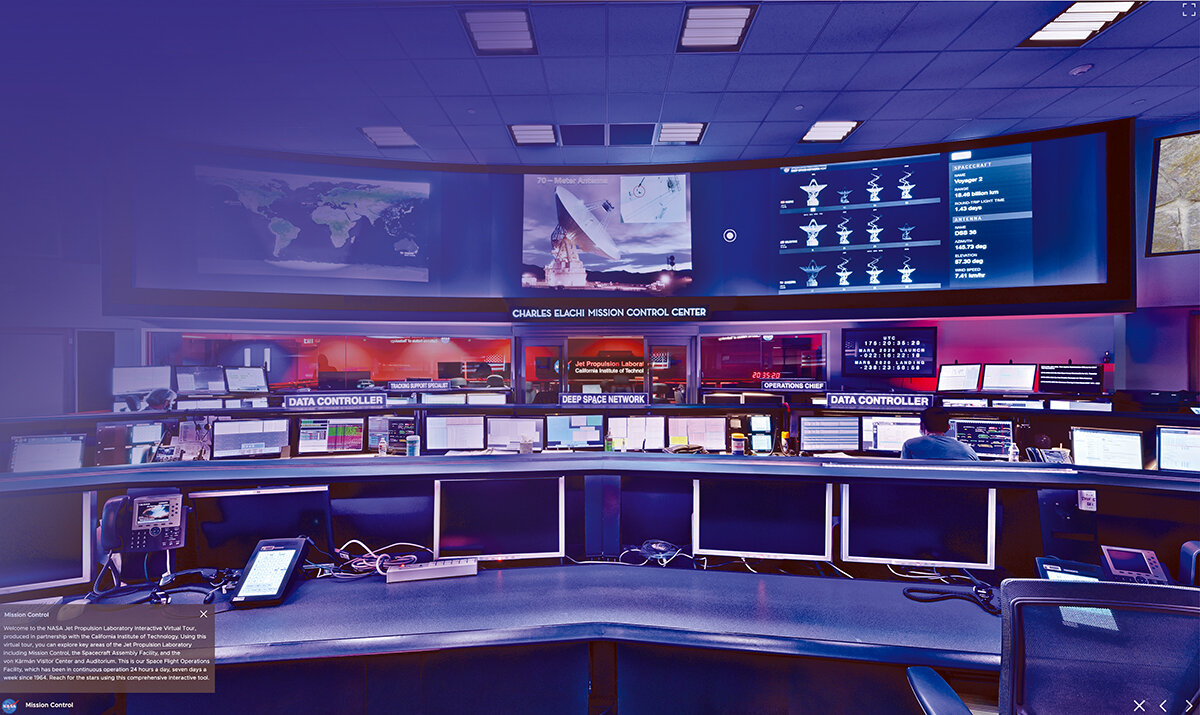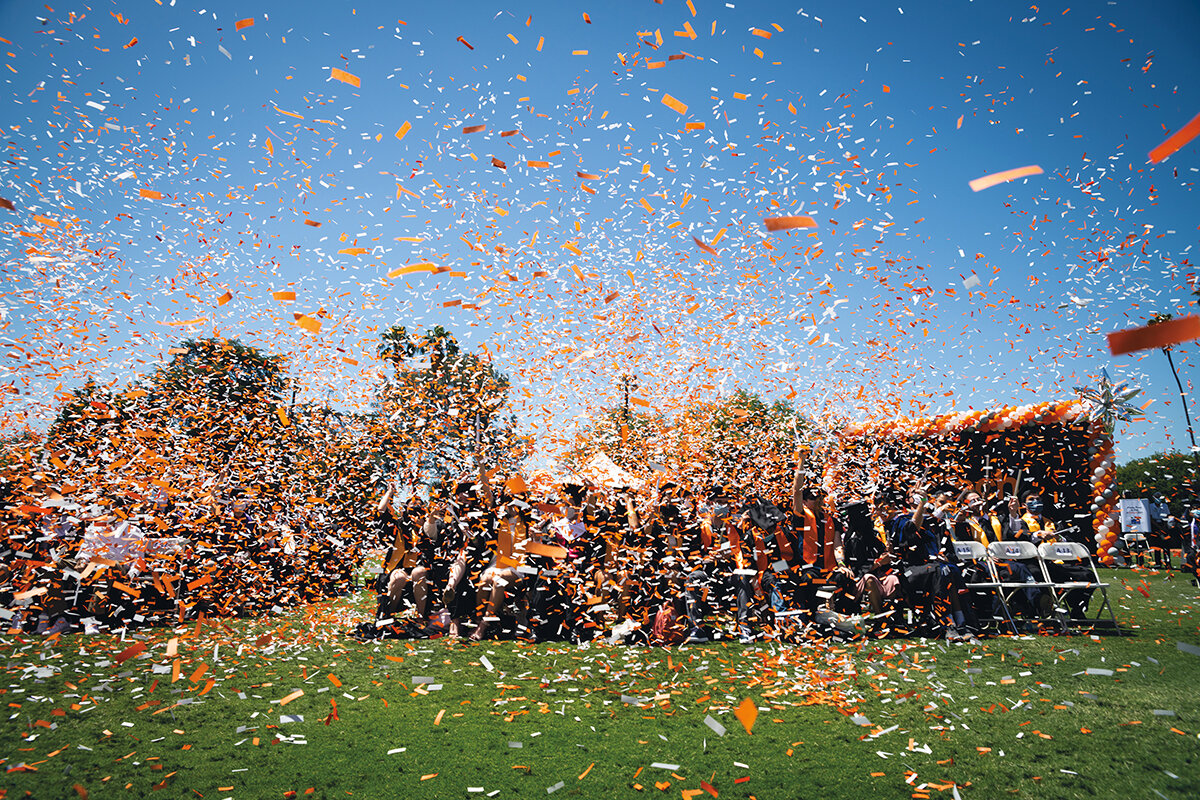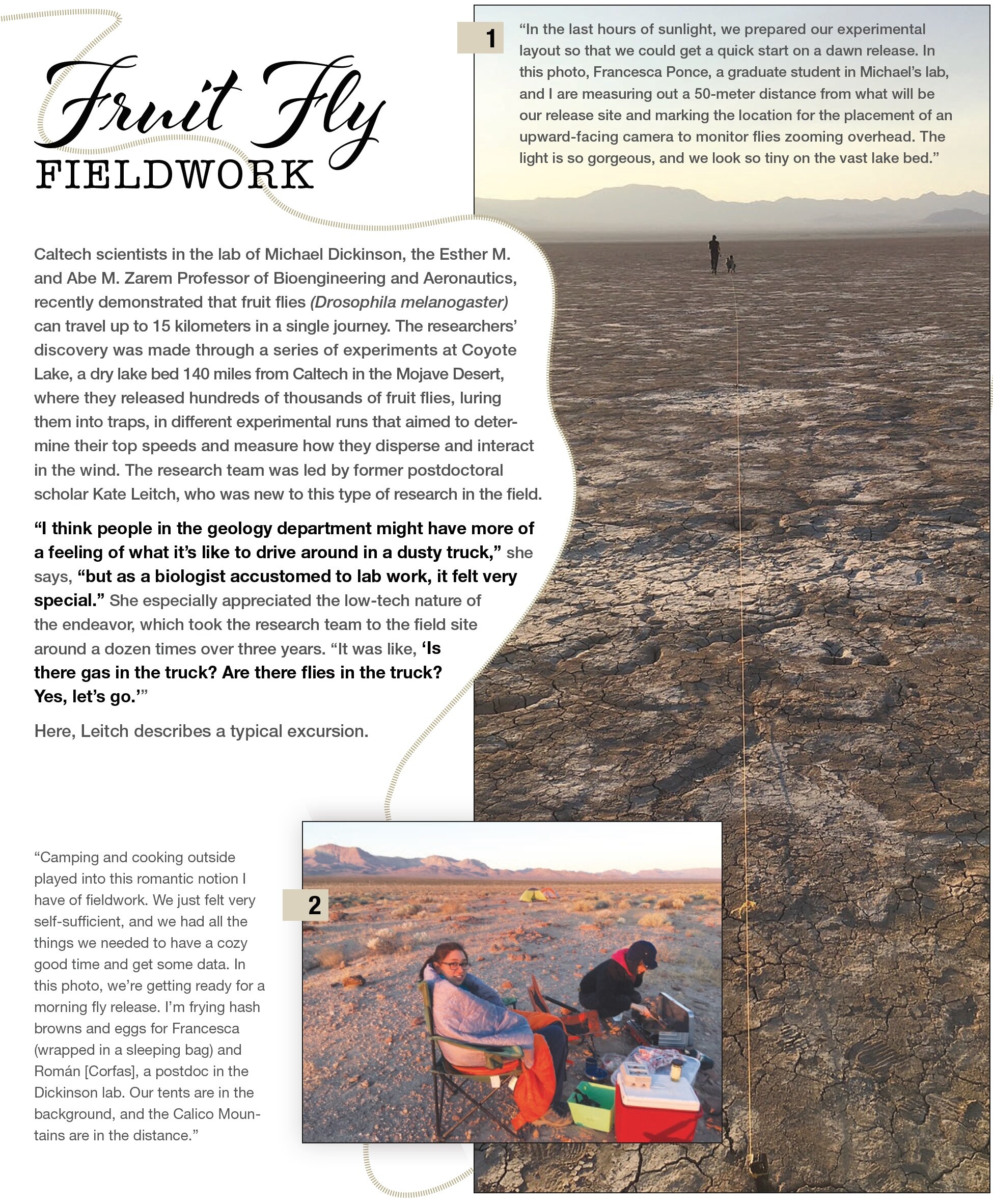Short Takes: JPL Virtual Tour
Photo: NASA/JPL-Caltech
Did you know?
The Jet Propulsion Laboratory, which Caltech manages for NASA, offers a virtual tour of the facility online, including the Space Flight Operations Facility, which has been in continuous operation 24 hours a day, seven days a week since 1964. Go to jpl.nasa.gov/virtual-tour.
Photo courtesy of Selina Zhang
“When I think about my campus life, what impressed me most was about learning capability. Because today, yes, I have some finance background, but now I’m leading such a big organization, such a huge business covering many sectors. It’s not about what you learn from a specific major at university. It’s about what you learn about learning capability. So, when you come across new things—new business, new opportunities—you can identify the opportunity and hit the pain point of the customers.”
— Daniel Zhang, chairman and CEO of Alibaba, in conversation with Caltech president Thomas Rosenbaum at a May 19 Break Through Insight virtual event.
Photo: Brandon Hook
Save the Date!
All 2020 and 2021 graduates, along with their families and friends, are invited back to campus on Saturday, October 16, 2021, for an in-person celebration that will include a PhD hooding ceremony and other Caltech commencement traditions. Updates will be shared on commencement.caltech.edu.
Amazon on campus
Illustration: Brooks+Scarpa
This summer, the new Amazon Web Services Center for Quantum Computing will open on South Holliston Avenue, adjacent to the Pasadena Fire Department station at Del Mar Boulevard. The center will be led by Oskar Painter (MS ’95, PhD ’01), the John G Braun Professor of Applied Physics and Physics, along with Fernando Brandão, Bren Professor of Theoretical Physics. Painter and Brandão are on leave from Caltech and working full time for Amazon Web Services (AWS) to establish the center, which will bring together researchers from Caltech, other universities, and industry to develop more powerful quantum computing hardware and software, and to identify new applications for quantum technologies.
Painter says that the center will support a more seamless exchange of ideas and technologies from a university research setting to a commercial enterprise. The strong connection between cuttingedge research and development of commercially viable quantum technologies will help to nurture and develop innovative ideas in the area of quantum computing. “Ultimately,” says Painter, “we foresee a cycle in which we will work on quantum technologies that may play a role in new directions of scientific exploration on campus, such as in materials development, quantum chemistry, and precision sensors at the quantum limit.”
The new building will be occupied primarily by scientists, engineers, technicians, and administrative staff from AWS. There will also be several Amazon Scholars, says Painter, who will be faculty from Caltech and other institutions, as well as a small cohort of undergraduate and graduate student interns. The 21,000-square-foot building presented a design challenge to architects Brooks + Scarpa, of Hawthorne, California, since the ground floor, dedicated to laboratories that call for the most quiet and controlled environment possible, has no windows beyond the main entrance lobby. A windowless box-like building would not have integrated well into the surrounding neighborhood, so the architects broke the structure into smaller components, with generous windows and landscaped terraces on the second floor.
The facade bricks shift from a regular brick pattern into a more complex pattern, rotating and twisting to create subtle shadows, depth, and a refined sense of scale—a look inspired by quantum computing, say the architects. Changing sunlight conditions, they say, will also “make the facade go soft and silver in just a few seconds, a quick-moving phenomenon that bends light and casts shadows.”
Interior work spaces are open and reconfigurable to facilitate a variety of collaborations.
“I do think an important part of talking about science is educating the public about how our level of uncertainty decreases as time passes, as we get more information and more studies are performed. So, being forthright and honest about the level of uncertainty, at the same time as emphasizing that this will change and we will at some point get to the truth … I think that’s the key to it.”
— Kip Thorne (BS ’62) at the February 2021 American Physical Society webinar “Communicating Science to Nonscientists in Post-Election & Post-Pandemic America”
Photos: 1 and 2) Román Corfas; 3) Floris van Breugel; 4) Kate Leitch; 5) Ben Neufeld; 6) Ainul Huda.







